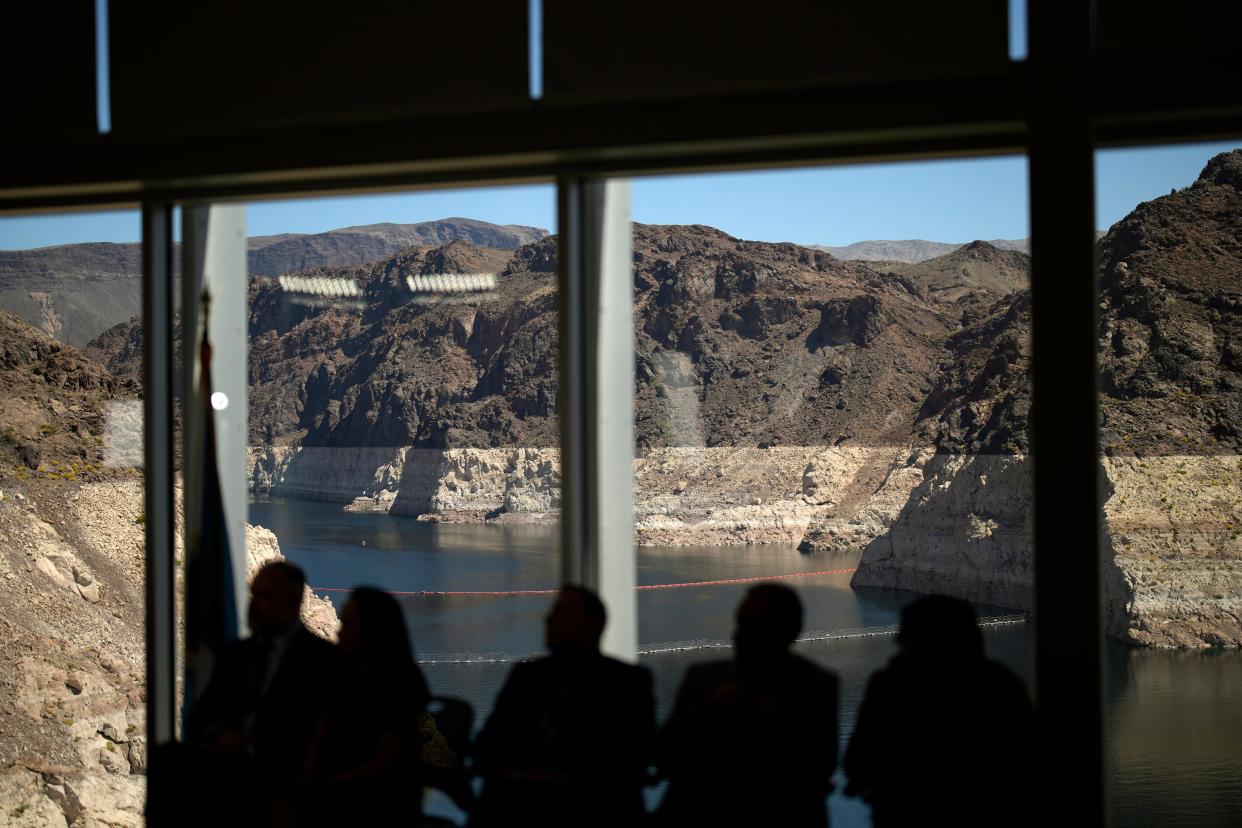Colorado River's fate relies on water cuts that probably will never happen

The feds came up with two ideas for how to save the Colorado River.
Neither is likely to happen.
Federal and state water officials have been beating that drum since the Supplemental Environmental Impact Statement was released on April 11.
Both alternatives – relying simply on the preexisting priority system or on an across-the-board cut that would be doled out according to use – are extremes on the spectrum meant to spur debate.
They are not a realistic view of how deep, painful cuts might play out through 2026, presuming this wet winter and other voluntary actions to save water will not be enough to stabilize Lake Powell and Lake Mead for that long.
CAP would be reduced to a trickle
But that doesn’t mean we should completely ignore the projected impacts of either alternative.
Because, if anything, it makes the case for why we so desperately need to find something in the middle.
For that, we should turn our attention to appendix D of the plan, which spells out at what point specific water users could be cut, and by how much, in the two action alternatives.
We’ve said in shorthand, for example, that the Central Arizona Project – which delivers water to cities, tribes and farmers in metro Phoenix, Pinal County and Tucson – would be zeroed out under Alternative 1 (the priority-based one).
And that’s true: Every drop of the CAP’s internal Non-Indian Allocation, Municipal and Industrial and Indian priority pools would be cut.
That’s part of the state’s fourth-priority water, which also would be zeroed out under a mandatory 2.083 million acre-feet cut.
Gila River tribe would be zeroed out
But that doesn’t mean the canal would completely dry up then.
That’s because some cities – Chandler, Gilbert, Glendale, Mesa, Phoenix, Scottsdale and Tempe – also have access to some of the state’s third-priority water, which would be cut but not completely axed as mandatory cuts increase to 4 million acre-feet.
Granted, this would be a trickle of water, compared to what now flows through the CAP.
And no, the study does not fully model the impact on cities if that little water were to flow to them. It’s a sorely missing piece of analysis that could really add to the debate.
No good count: How many areas could lose water delivery?
But note who doesn’t get water in a straight priority-cut scenario: the Gila River Indian Community.
The tribe, which has the largest CAP entitlement and is a growing power broker in Arizona’s water community, only has fourth-priority water.
And in this scenario, it would lose all of it.
Which means the many others who lease water from the tribe also would lose their water, creating a cascading effect on water policy and state and tribal politics.
California would feel the pain, too
California also would feel the pain, albiet a bit later than Arizona.
Its fourth-priority water – which mostly goes to the Metropolitan Water District that serves millions in the Los Angeles and San Diego areas – would be axed at a 2.5 million acre-feet cut.
As would all of the state’s third-, second- and first-priority water by the time a 4 million acre-feet cut was mandated.
That means the only California users left with water would be Present Perfected Rights holders, the most senior in the basin.
These rights holders would not lose a drop of water, even as the rest of the state’s lower-priority water would be zeroed out.
And even then, there’s an extra 20,393 acre-feet that would need to be cut to hit the 4 million acre-feet target.
From where? Good question.
The feds went to great lengths in the appendix to not insinuate where it might come from.
We need to know where not to go
Let me stress again: These are just hypotheticals.
If Alternative 1 (or 2, for that matter, which zeroes out far fewer users but requires cuts from everyone) were chosen as written, you can guarantee we’d end up in court.
The feds want to avoid that, if possible, because they know that lawsuits would just tie things up while the Colorado River tanks.
But it’s still important to spell out the consequences of these two extremes, because if nothing else, it helps rule out where we don’t want to go.
Reach Allhands at joanna.allhands@arizonarepublic.com. On Twitter: @joannaallhands.
If you love this content (or love to hate it – hey, I won't judge), why not subscribe to get more?
This article originally appeared on Arizona Republic: Colorado River's fate relies on water cuts that may never happen

